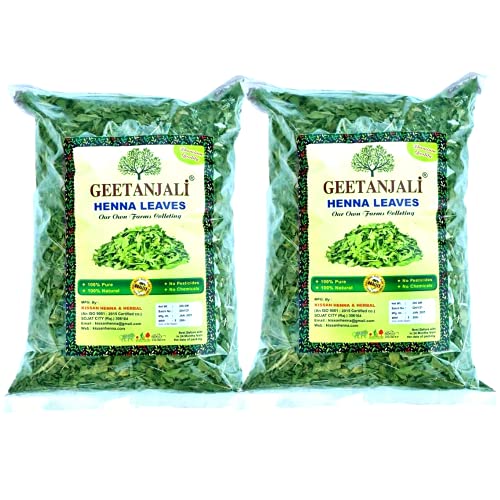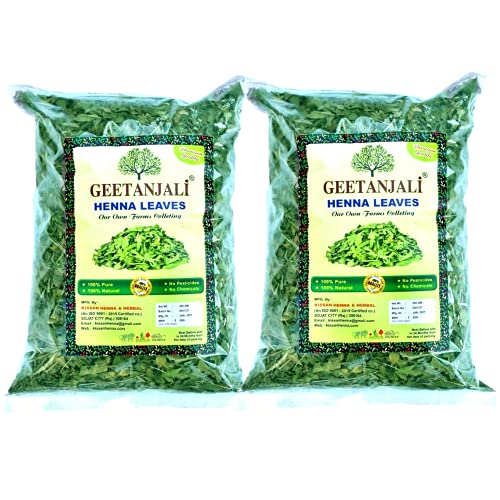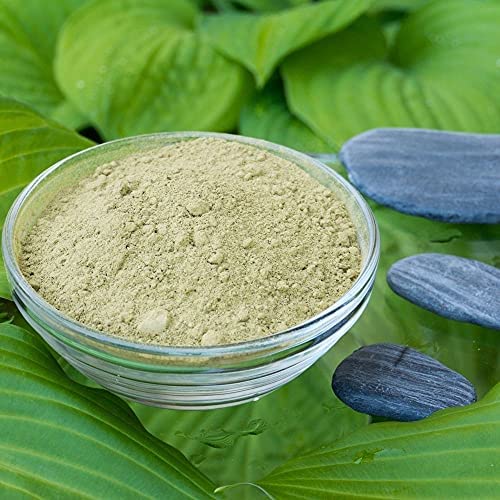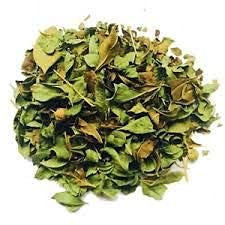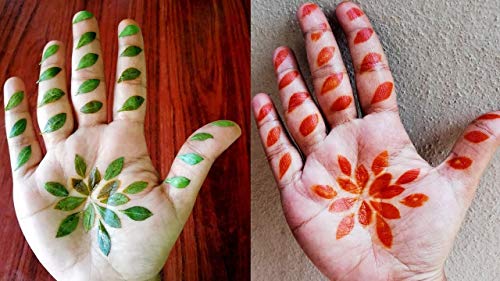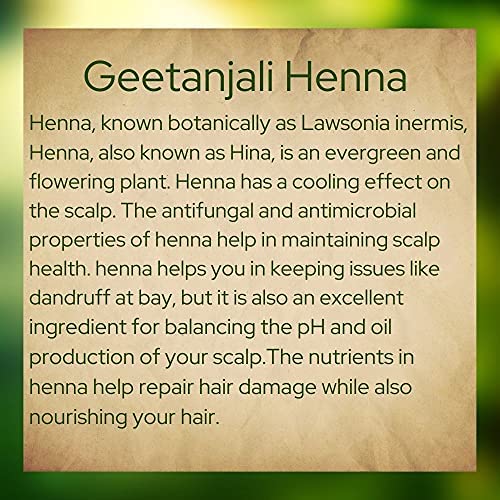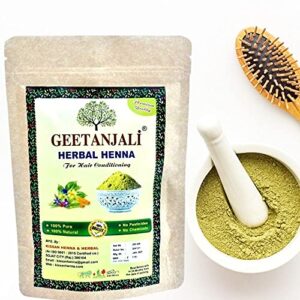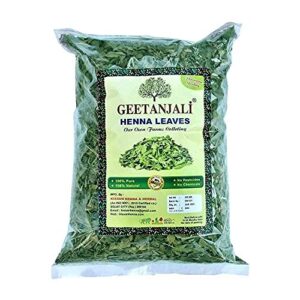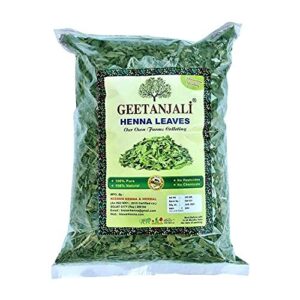The natural beauty of henna with our Mehandi Leaves and Hair Colour product. Our high-quality, all-natural henna powder is made from pure Mehandi leaves and provides rich, long-lasting color to your hair. Use it to cover gray hairs or to enhance your natural hair color. Our henna powder is safe and chemical-free, making it the perfect choice for those who want to avoid harsh synthetic hair dyes.
Geetanjali Natural Henna Leaves for hair make hair shiny and gentle. This is an Herbal based Mehndi leaves product. It Decreases hair fall and makes them silky and strong. Organic Henna Leaves with a natural purity. History of Henna : Henna is a dye prepared from the plant Lawsonia inermis, also known as the henna tree, the mignonette tree, and the Egyptian privet, the sole species of the genus Lawsonia. Henna can also refer to the temporary body art resulting from the staining of the skin from the dyes. After henna stains reach their peak color, they hold for a few days, then gradually wear off by way of exfoliation, typically within one to three weeks. Henna has been used since antiquity in ancient Egypt to dye skin, hair and fingernails, as well as fabrics including silk, wool, and leather. Historically, henna was used in West Asia including the Arabian Peninsula and in Carthage, other parts of North Africa, West Africa, Central Africa, the Horn of Africa and the Indian subcontinent.
The different words for henna in ancient languages imply that it had more than one point of discovery and origin, as well as different pathways of daily and ceremonial use. It is important to note that the modern term “Henna tattoo” is a marketing term only. Henna does not tattoo the skin and is not considered tattooing. Mehndi (henna) applied to the back of both hands in India Henna pattern on a foot in Morocco Henna has been used to adorn young women’s bodies as part of social and holiday celebrations since the late Bronze Age in the eastern Mediterranean.
